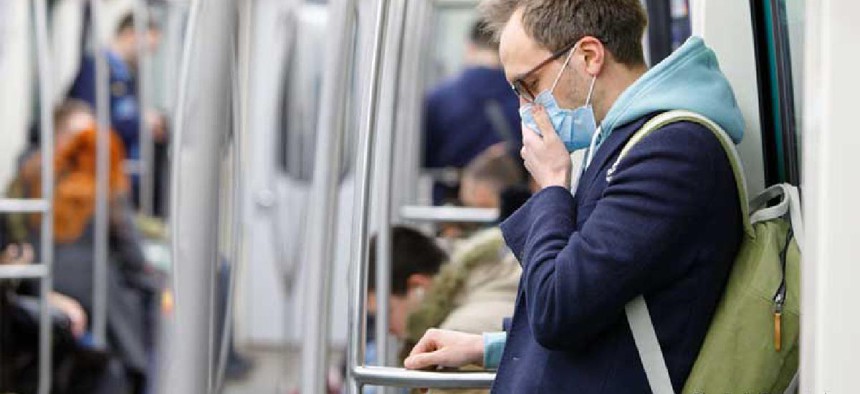NYC transit looks to tech to tamp down virus transmission


Connecting state and local government leaders
A new reports suggest the city’s Metropolitan Transportation Authority monitor mask use and physical distancing, speed passengers through stations and reduce touchpoints as commuters return to public transit.
As New York City residents enter Phase 2 of reopening and venture out of their homes, the Metropolitan Transportation Authority is requiring commuters wear masks on public transit to help prevent the spread of the coronavirus. But that may be only the beginning of new precautions.
Given the importance of limiting passengers’ exposure to COVID-29, the Tri-State Transportation Campaign, a non-profit advocacy group, recently issued a report suggesting the MTA consider scanning its CCTV video to monitor mask use and physical distancing and deploy other technologies to reduce crowding, speed passengers through checkpoints and limit the number of touchpoints as public transit ramps up.
Specifically, the report suggested transit agencies:
- Modernize their infrastructure by combining ultra-wideband technology and communications-based train control to support instantaneous communication between transit officials, trains, dispatchers, maintenance staff and passengers.
- Encourage contactless fare payments that also collect the appropriate data on crowding at stations and on buses and trains.
- Speed movement of riders through stations and support alternate routing when trains and buses are delayed. When stations get too crowded, the existing automated turnstile systems can lock out passengers outside of stations as a measure of last resort.
- Install new, relatively low-cost thermal and video cameras at turnstiles to monitor temperature and mask compliance for more effective communications with riders, such as public service messages that announce the percentage of mask compliance.
Addressing issues of data privacy, the report said its recommendations “can and should be implemented in a way that safeguards user privacy.” Data collected to support real-time crowding estimates, for example, might use application programming interfaces to pull information from summaries of turnstile entrances and the number of devices connected to Wi-Fi networks.
“None of the proposed systems require the collection of individual-level data by transit agencies, except where they are already used in existing systems,” the report said.
NEXT STORY: How data visualizations drive decisions





